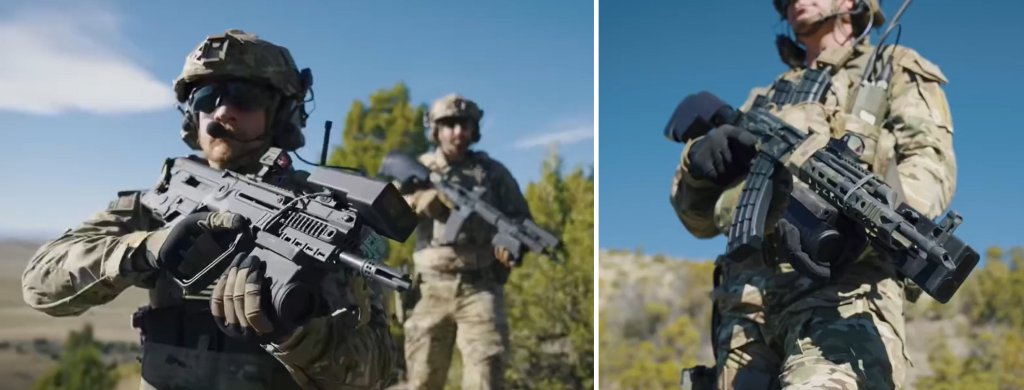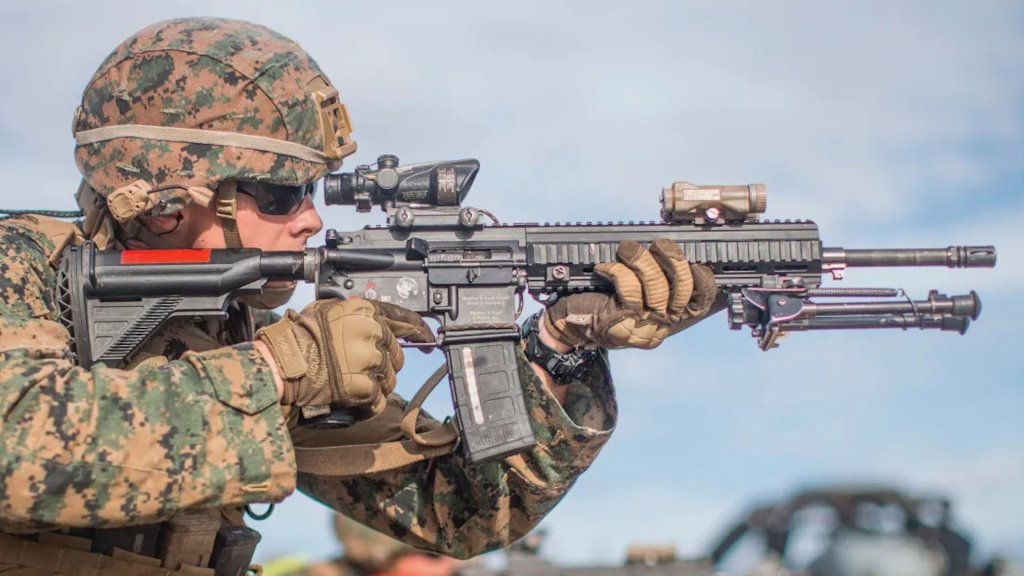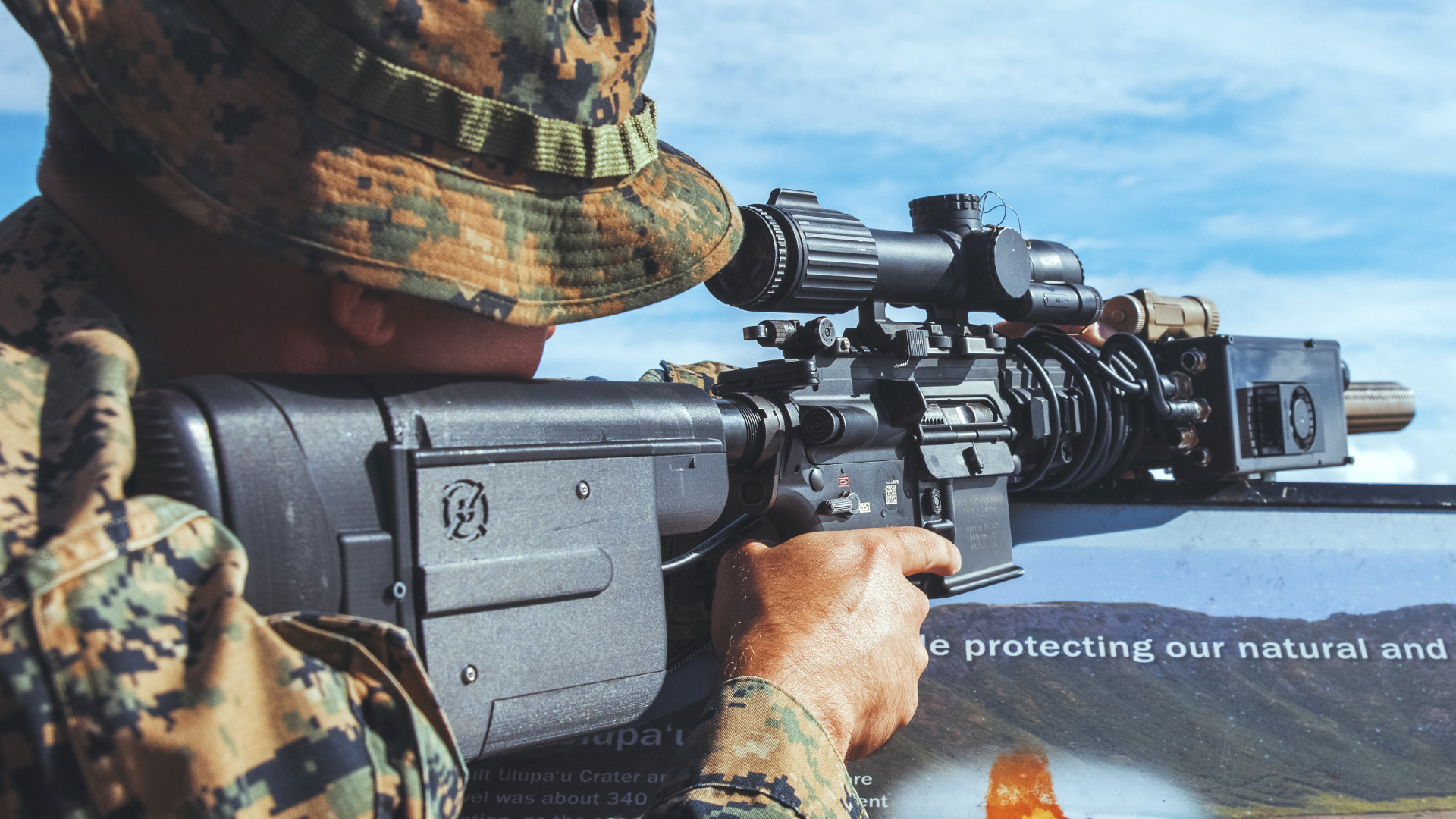The U.S. Marines are testing a system for standard service rifles that automatically fine-tunes the point of aim with the help of a powered buttstock as a new option to help shoot down drones. The service is in the midst of a broad push to acquire new capabilities to help every Marine better protect themselves from ever-growing uncrewed aerial threats.
The 3rd Marine Division in Hawaii released pictures today from a live-fire demonstration of a 5.56x45mm M27 Infantry Automatic Rifle (IAR) equipped with the ZeroMark Fire Control System (FCS). ZeroMark is a New York-based startup that was founded in 2022 and that says it has “deep roots in Israel.” The company announced a new infusion of $7 million in venture capital funding to support the ongoing development of its counter-drone FCS back in May.

“The ZeroMark FCS is an AI [artificial intelligence]-powered tool that enhances aim accuracy and counter-drone capabilities, providing Marines with a portable, real-time threat detection and response tool,” a caption for one of the pictures from the 3rd Marine Division says.
ZeroMark’s system is not the first automated small arms targeting system the Marines have looked into in recent years with a particular eye toward helping engage drones. The service has also at least been evaluating SMASH 2000-series computerized optical sights from Israeli firm Smart Shooter. SMASH-series sights have the ability to detect and lock onto targets of interest, even ones on the move, and calculate an optimal aim point for the shooter. Depending on how the system is configured on a particular gun, it can even prevent the trigger from being pulled until the weapon is properly aimed at the target.
The targeting system in ZeroMark’s FCS is similar, in some very broad strokes, to that of the SMASH family. It uses an array of sensors, including electro-optical cameras and LIDAR, coupled with machine vision and advanced software algorithms, to acquire targets, according to the company. Where ZeroMark’s offering differs most substantially is in its motorized articulating buttstock, which uses the data from the sensors to help physically move the gun’s point of aim. This, in turn, helps the shooter engage the target with greater precision and speed.

“[The mechanized buttstock] doesn’t move the soldier’s arm, it creates a virtual pivot between shoulder pad and handheld positions that creates angular change of the bore axis (ultimately where the gun’s pointed),” ZeroMark CEO Joel Anderson said in an interview earlier this year, according to TechCrunch. “The control systems for it are modeled to compensate for all the human factors (proprioception, noise, movement, torque, etc.) as well as the drone’s movement. So if you point in the general direction of the drone such that you’d be in the vicinity of a drone, the system does the rest.”
Zeromark says it is also easy to install and uninstall as required on a wide variety of different rifle types. A promotional video seen earlier in this story shows prototypes or mock-ups of the system installed on rifles in the AK-47/AKM, AR-15/M16, and Tavor families, as seen below.

Overall, ZeroMark says its FCS “makes hitting a small drone at 200 yards as easy as hitting a 60-foot-diameter circle” at the same range, per TechCrunch. At least for now, the company has said work on its targeting system is focused on the counter-drone role, but has acknowledged that its system could be adapted for use against a wider array of target types in the future.
The Marine Corps’ interest in new ways to neutralize drones that it can add to its existing rifles and other small arms is certainly no secret. The Marine Corps Systems Command (MARCORSYSCOM) put out a broad request for information (RFI) back in July that included a call for proposals for “a rifle / rifle optic capable of tracking and defeating small UAS [uncrewed aerial systems],” as well as rifle-mounted electronic warfare jammers, specialized ammunition types, and other counter-small UAS (CsUAS) capabilities.
“The Joint CsUAS Office (JCO) has identified dismounted CsUAS capabilities as a vulnerability to the joint force. The Marine Corps Warfighting Lab (MCWL) identified the need for dismounted CsUAS throughout multiple experiments,” the RFI explained. “Additionally, Tactical Training and Exercise Control Group (TTECG), Infantry Officer Course (IOC), both Schools of Infantry (SOI), and other units continue to fly threat UAS against Marine units during field exercises and training events. Each experiment and training exercise shows Marines are vulnerable to threat UAS and require the ability to defend themselves from the threat.”

This followed the Corps unveiling a three-tier plan to improve the ability of units at all levels to shield themselves from drones earlier this year.
“The threat is evolving in real time,” Lt. Col. Robert Barclay, the Marines’ ground-based air defense advisor for aviation expeditionary enablers, said at the Modern Day Marine expo in May. “We were playing a cat-and-mouse game a lot of times, and that quite frankly gets a little cumbersome, and you don’t want to be behind the power curve.”
The threat posed by various tiers of uncrewed aerial systems, including highly maneuverable first-person view (FPV) types turned into kamikaze drones and other weaponized commercial designs capable of dropping small improvised munitions, is not new. This is something The War Zone routinely highlights and the threat ecosystem looks to be on the verge of taking another major step forward thanks in large part to advances in artificial intelligence.
The ongoing war in Ukraine, where both sides employ FPV and other drone types on a daily basis, has been especially central to finally thrusting the reality of drone threats into the mainstream consciousness. A global explosion of demand for counter-drone capabilities, including ones that individual personnel can carry, has followed.
TechCrunch reported in May that ZeroMark was in talks to send its FCSs to Ukraine, as well as to demonstrate them to unspecified elements of the U.S. military.
Whether Marines or any other part of the U.S. armed forces ultimately adopts ZeroMark’s FCS remains to be seen, but capabilities to help individual shooters engage drones and other targets faster and more accurately are increasingly becoming a top prioritiy.
Contact the author: joe@twz.com
